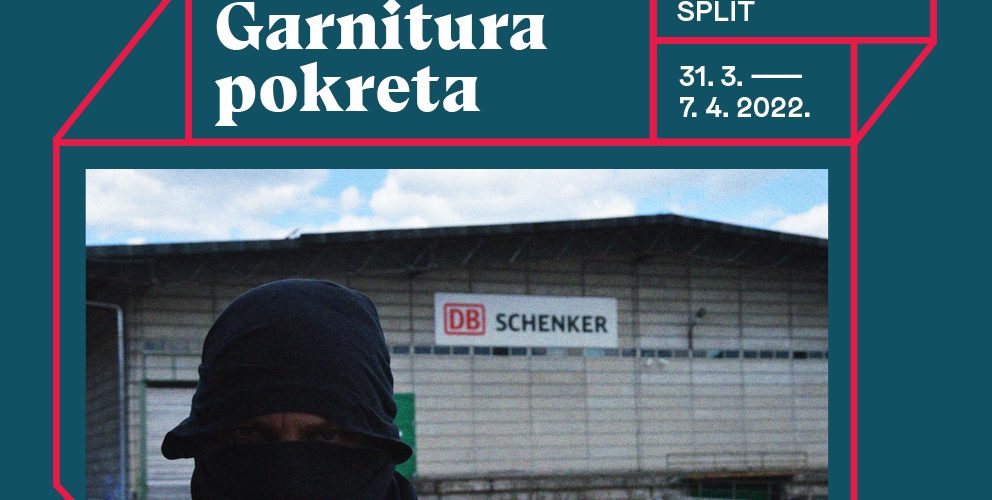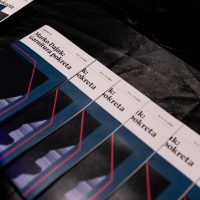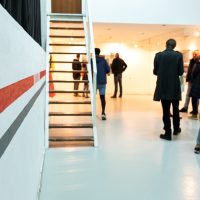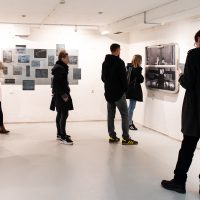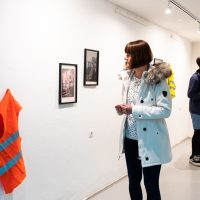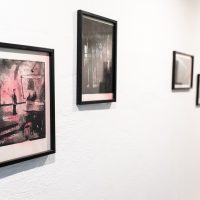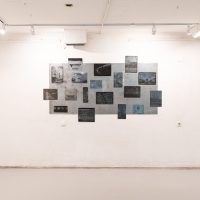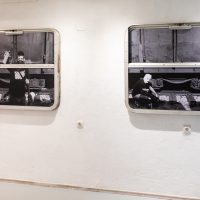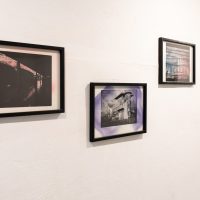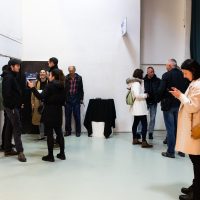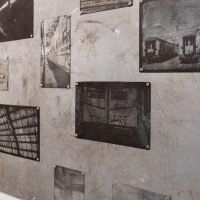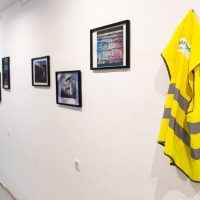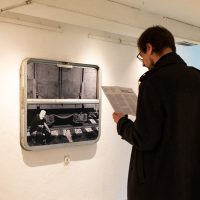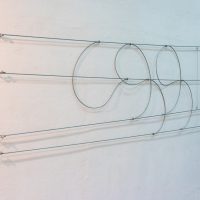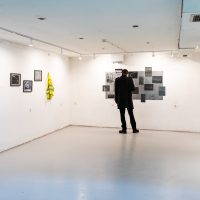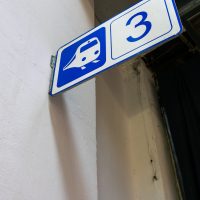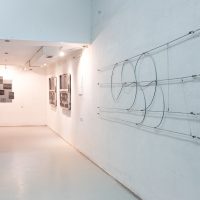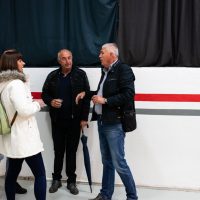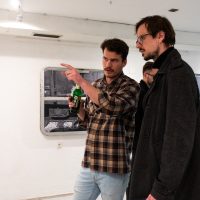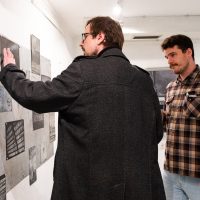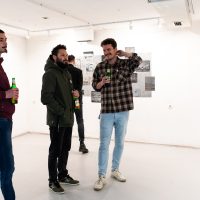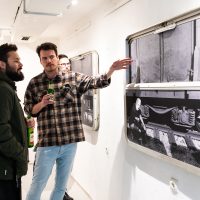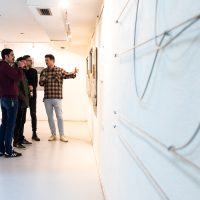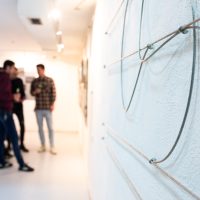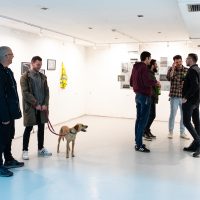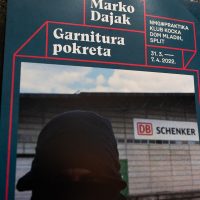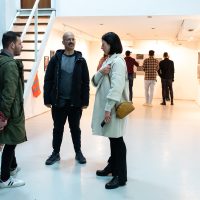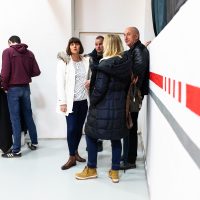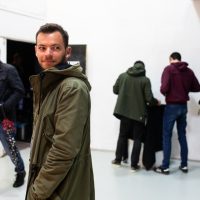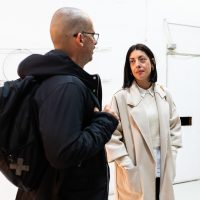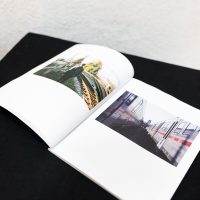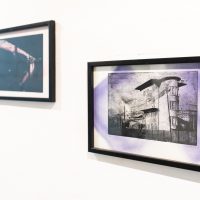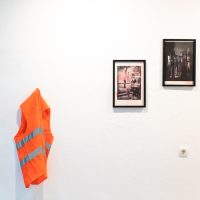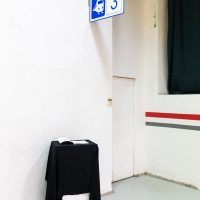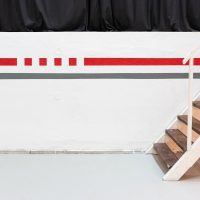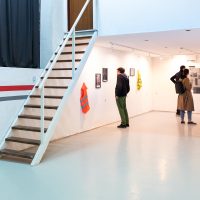NMG@PRAKTIKA_Marko Dajak: Garnitura pokreta
Klub Kocka Gallery, Youth Center Split, Ulica slobode 28
OPENING: Thursday, March 31st, 8 pm
VIEWINGS: Business days 6-8 pm (until April 7th)
══════════════════════════════════════════
ABOUT THE WORK:
When the Lumière brothers first showed the film Arrival of a Train at La Ciotat in 1896, the audience panicked and fled the hall, believing that a real train was coming towards them.
No one at the time had any idea how much the role of trains would change over the next hundred years.
From scary machines transporting people and materials across entire continents, trains have today become the last means of transportation you would choose. However, they still retained a certain amount of power. Trains are omnipresent in urban areas in terms of subways, but also in terms of the materialization of ideas and messages…
Since the second half of the twentieth century, with the development of urban, popular and street culture, people from the margins of society (the homeless, rebels) convey their messages through graphic messages on trains, stations, wagons. They leave their traces and, like cavemen, tribes and ancient graffiti artists, send the message: “I am here, I am present.”
Although subcultural scenes are becoming more relevant and recognizable even in art institutions, although ministries and foundations are funding street art, many artists remain enigmas today, especially graffiti writers that work on trains.
By doing so under the cover of night, using chalk, spray and other materials, these undercover artists create their works faster than artists in studios, and their messages reach a wider audience than they would in a gallery or museum.
In his multimedia exhibition Garnitura Pokreta, Marko Dajak examines the relationship between traditional institutions, contemporary galleries, collectors, audiences and writers.
He uses interdisciplinary methods and various media (photography, printmaking, wire, lightboxes, art book…) to explore the impact of “art on trains” on society in general, but specifically on contemporary art practices.
The work is primarily conceived in the form of an artist book that is part of a larger work – a spatial installation with an adjustable setup.
Among all that is presented in the exhibition (and the exhibition is always adapted to the space), the artist book presents all the phenomena that come with the graffiti scene on trains and includes Dajak’s many years of artistic research. Unlike digital media, artist books tend to retain memory better, thus opening another topic – transience of written trace, of life, of ideals.
The spatial installation contains original works and parts appropriated from trains, thus gathering a number of items: power lines, original inscriptions, a uniform and more.
The set also includes a panel, i.e. a metal plate representing the train, with graphic matrices made on photo templates displaying the atmosphere of the railway.Train windows have been converted into lightboxes with photos of writers in action, giving us exclusive access to those moments of quick action and anxious anticipation.
Thinking about graffiti on trains, one can conclude: be it a static work (such as on the walls of railway stations) or mobile graffiti on trams, the fact is that art in public space (especially mobile) reaches all walks of life and types of people. While exhibitions in a gallery space attract only the academic community, friends of the artist, or people living nearby, illegal work on trains will be seen by all passers-by and passengers: from hotel directors to cleaning ladies to beggars.
Although they cannot sell their works, writers that work on trains – ironically – can better present their message as illegal work in public space than they could in exhibition space, which questions the issue of accessibility of art to all segments of society.
Following his research, Dajak wonders: “Is there a better and more direct way to make your art visible? Is there a better exhibition practice?”
══════════════════════════════════════════
ABOUT THE ARTIST:
Marko Dajak (1990), born in Split, graduated from the Academy of Fine Arts in Zagreb under the mentorship of prof. Ines Krasić and prof. Sonja Vuk. He has a master’s degree in art culture and fine arts, and his main field of interest is graphics and applied graphics. He is an amateur in analog photography, which he often combines with printmaking techniques, and explores the possibilities of the graphic process and display. He is fascinated and occupied by abandoned spaces, discarded things, people and their lives, old techniques and technologies, subcultures and margins of society. In his spare time, he documents the current graffiti scene and its actors. He occasionally deals with scenography and illustration. He has exhibited independently in Croatia and participated in group exhibitions in the country and abroad. He is currently working as an expert associate of the graphic arts department of the Academy of Fine Arts in Zagreb, a workshop for letterpress and gravure printing.
══════════════════════════════════════════
CURATOR: Katarina Duplančić
NMG CURATORIAL TEAM: Katarina Duplančić, Natasha Kadin, Vedran Perkov
DESIGN: Nikola Križanac
TRANSLATION: Katarina Duplančić
DOCUMENTATION: Glorija Lizde
SETUP: Marko Dajak, Katarina Duplančić, Franko Sardelić Kolinac
DONORS: Ministarstvo kulture i medija RH, Grad Split
MAVENA SUPPORTED BY: Zaklada Kultura nova
SPECIAL THANKS TO: KUM, MKC, PDM
══════════════════════════════════════════
PRESS
http://pdm.hr/category/lokacija/galerija-kluba-kocka/
https://www.alu.unizg.hr/alu/cms/front_content.php?idcat=52&idart=2906&lang=1
https://www.culturenet.hr/hr/nmg-praktika-marko-dajak-garnitura-pokreta/178304
https://www.civilnodrustvo.hr/program-u-splitskom-domu-mladih-sve-bogatiji/
══════════════════════════════════════════

